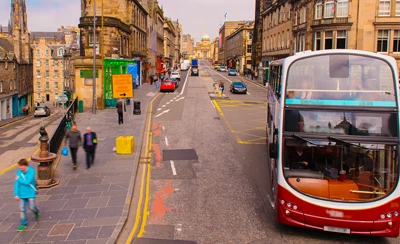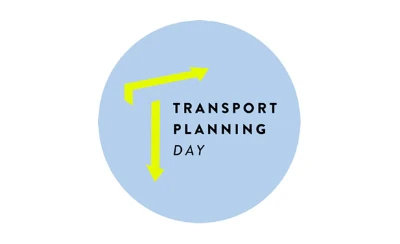Transport Planning Society Response to Government Consultation on Proposed Reforms to the National Planning Policy Framework
Background to the Transport Planning Society
The Transport Planning Society (TPS) is the UK body that represents the transport planning profession. Its mission is to facilitate, develop and promote best practice and innovation in transport planning and provide a focus for dialogue between all those engaged in it whatever their background.
Given the area of expertise for our membership, we have focussed the majority of our comments in relation to question 69 and the introduction of a vision-led approach to understanding and mitigating transport impacts of new development. We have however also provided comments on q23 with respect to grey-belt at the end of this submission, and additionally fed our views on other matters to inform the wider responses by the RTPI and CIHT.
To assist the Ministry of Housing Communities and Local Government (MHCLG) TPS has provided its recommendations in bold along with narrative to explain its thinking. Below is a summary of all the key recommendations we are making.
Summary of TPS recommendations on reviewed NPPF
- Important to recognise the role of transport in promoting community health and tackling the scourge of childhood obesity.
- The move to a vision-led approach has important ramifications across the transport sector, and not only in relation to the planning of new development. A response on these implications needs to be provided should these changes be adopted, to provide clarity to a wide range of scheme promoters and avoid expensive legal challenges.
- The TPS is concerned that, given the importance of new Transport Assessment guidance in the context of a completely new way of working for the sector, sufficient time is taken to ensure that it is fit for purpose and that views from the wide range of stakeholders that will need to use this document are sought to ensure that it works effectively in practice.
- Provide clarity on the scenarios that must be tested for different types of development; how they should be developed; who decides their acceptability and under what criteria.
- Publish an unambiguous definition of ‘vision-led’ transport planning and its clearly stated objectives.
- A vision-led approach to placemaking is different to a vision-led approach to access and this needs to be carefully articulated in future guidance.
- Revise wording to reduce ambiguity and clearly emphasise the need for vision-led transport to optimise access by sustainable transport modes.
- Clearly state and call out the problems with the existing approaches to transport planning for development that the new approach intends to address.
- As a minimum, delete the word “only” from the current paragraph (consultation draft paragraph 113). Remove ‘impact on highway safety’ and replace it with ‘safety concerns’ (consultation draft paragraph 113).
- Ideally change paragraph 113 (consultation draft) to: “Development should be prevented or refused on transport grounds if there would be unacceptable safety concerns, or over-reliance on vehicular access and/or failure to optimise access by sustainable transport modes, tested in accordance with key scenarios as defined by the DfT.”
- New guidance should clearly state that any sanctions for non-delivery of the stated objectives of a vision-led approach must be related to delivering the agreed vision (ideally maximising sustainable access), rather than reverting to a highways-based approach.
- Issue clear guidance that rejects the use of historical traffic data to build a worse-case baseline from which development impacts are assessed.
- Analyse results from those developments that have applied approaches in line with the intended ‘vision-led’ approach and identify opportunities and issues experienced for further dissemination.
- To inform the new guidance, it would be beneficial to engage closely with a representative group of highway authorities to understand why they do not consider that they are currently empowered to deliver the types of development their stated policies clearly aspire to.
- Travel Plans are a key part of a vision-led approach and the new guidance should explain clearly their intended function and what they should contain.
- Produce parameters for vision-led transport in terms of aspirational mode-use targets for different geographies.
- Commit to running a series of training workshops and the provision of independent technical support to assist in the re-training of professionals working in development management /planning in the public sector.
- Government guidance on the use of planning conditions should be revised to re-set case precedent and clarify how key elements of a vision-led strategy should be enforced and what interventions are considered reasonable, relevant and necessary.
- Commission pilots to help formulate learning and best practice.
- Ensure that the selection of ‘New Towns’ builds on the pioneering work undertaken by Create Streets and Sustrans1 to optimise accessibility by sustainable modes.
- Guidance is required on implications for existing local plans from a move to a vision-led system.
- Government should commit to a date on when it will publish updated guidance on Local Transport Plans reflecting the adoption of vision-led and its relationship with Local Plans.
- Ensure that grey belt land releases conform to a sustainable transport access requirement.








